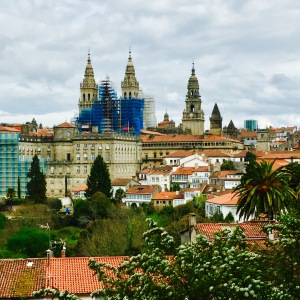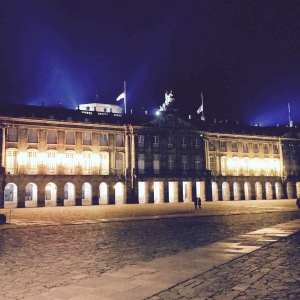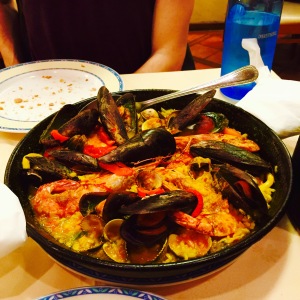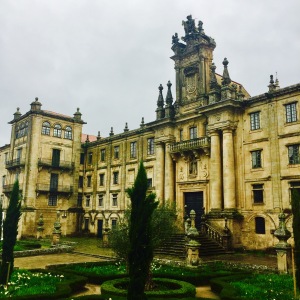 The Kingdom of Spain is a country of stereotypes. Ignoring the sun-kissed costas frequented by Northern Europeans, even the most culture-inclined travelers still think of Spain as the land of flamenco, tapas, bullfighting and invariably nice weather. Certainly the latter is why so many people visit this country.
The Kingdom of Spain is a country of stereotypes. Ignoring the sun-kissed costas frequented by Northern Europeans, even the most culture-inclined travelers still think of Spain as the land of flamenco, tapas, bullfighting and invariably nice weather. Certainly the latter is why so many people visit this country.
While these stereotypes do ring true in some regions of Spain, there are parts, some off the beaten track and some on, that would be almost unrecognisable to the British or German sunbed hogger.
Having already seen the likes of Andalucia and Madrid and recently entering the nerd-dom of Spanish history, it seemed the right time to go to a more unknown Spain. As you may have read in my last blog, Spain offered me two choices that were both reachable by Ryanair and not part of the usual tourist circle: capital of Aragon, Zaragoza, and capital of Galicia, Santiago de Compostela. Thanks to airline price-wars, Santiago won out.
It would not be proper to refer to Santiago de Compostela as off the beaten track, rather just on a different track. I don’t know anyone personally who has been to this Atlantic corner of the Iberian Peninsular but this regional capital has been welcoming tourists from all over Europe for hundreds of years, well before the invention of the Union Jack beach towel.
For me I wanted to visit because the wider region of which the city is capital is one of Spain’s “historic nations.” Along with Catalonia of Barcelona fame and the ferociously unique Basque-country (or Euskadi in the lonely language of Basque), Galicia can boast having had its own king in the past and its own language, laws, government, flag and culture that is entirely separate from the country centered on Madrid in the present. How’s that for being different when it comes to travelling.
Santiago is so-called thanks to the legend, myth or history (depending on who you believe) that the apostle St. James (English for Santiago) visited here all the way from the Holy Land. The omnipresent Church PR machine then sprung into action in the Middle Ages and suddenly thousands of pilgrims were hiking across the continent to repent their sins at the sacred finishing-line, El Catedral de Santiago.
Today the majority of visitors are part of the same fan club and many still walk the Camino de Santiago, 500km across the north of Spain, either out of religious devotion or just for the novelty value of being able to say “I’ve done that.” That’s not to say that Santiago isn’t a place to visit for even the most fervent atheist…
So I’ve just gone on and on about how different Galicia is from the rest of Spain but it is still technically part of it and, while it does have its own aforementioned attributes, there are some aspects that, to a foreign visitor like me at least, are particularly Spanish in nature.
The most convenient of these was Spain’s daily schedule. For a visitor to England, arriving at 10pm would present a problem when hunger sets in. Although there are plenty of places where one can get a burger or a kebab of questionable meat, there’s not much in the way of restaurants in the UK which will stay open for you to begin your dinner after 11. Arriving in Spain at this time, though, it’s dinner time.
One of the defining qualities of Galicia is its cuisine and being surrounded on 2 sides by ocean, seafood is its specialty. I’ll say now, if the fruits of the sea are not your thing, or you are reluctant to see your lobster boiled alive or to witness any of your food being dismembered, Galicia is not the destination for you.
Walking with our cases through the old town, every eatery proudly displays fish, crustacean and mollusk as if it had been plucked from the sea, heads, claws and tentacles attached, that very afternoon. It’s true it probably was and I’d venture to assume that many of the restaurant owners are related to fishermen somewhere in their large Spanish families.
Having just traveled across land and sea and feeling more tired than gastronomically adventurous, we settled on paella. Although arguably a bit of a cop-out given than paella in some form or another is not particularly alien to England and that in its homeland, it is a definitive Valencian dish, the fact that the formerly living ingredients were most-likely native to the shores of Galicia justified our easy choice.
I’ve spoken before about how I’m no good at talking about food, but I will say this; the cost of dinner is never disappointing in this land. A huge paella for two full of clams, mussels, langoustines, squid and octopus accompanied by a bottle of the locally produced wine Albariño can cost less than 60€, and that’s in the expensive tourist districts.
Having further exhausted ourselves beheading our own food, it was time to take up the hospitality of a local monastery, just like countless travelers before us.
Perhaps a slight embellishment of the truth…
While along the Camino route, there are plenty of monasteries, convents and seminaries that will offer a bed for the night, the fact that I share a bed with another man may not have been entirely welcome. (I will however give credit to Spain that is was the first county in Europe to legalise gay marriage and is largely as liberal as possible in this way unlike many other countries where two men sleeping together would likely result in us having to get the British Embassy involved, I can respect a Spanish catholic monk’s slightly less hospitable view to this kind of overnight guest.)
Our hotel, the Hosped eria San Martin Pinario, was however a monastery in a former life and as such is one of the more interesting, if not most luxurious, hotels that I’ve ever stayed in. A long walk from front door to reception, first impressions of the former religious house are of cloistered courtyards and flagstones. What’s more, the basic bedrooms have original stone window seats and the headboards feature the ubiquitous symbol of the pilgrimage, the scallop shell. Not exactly a Premier Inn.
eria San Martin Pinario, was however a monastery in a former life and as such is one of the more interesting, if not most luxurious, hotels that I’ve ever stayed in. A long walk from front door to reception, first impressions of the former religious house are of cloistered courtyards and flagstones. What’s more, the basic bedrooms have original stone window seats and the headboards feature the ubiquitous symbol of the pilgrimage, the scallop shell. Not exactly a Premier Inn.
Novelty aside, our accommodation was 10 paces from one the many entrances to the cathedral and this is where we really began to join the ranks of the pilgrims….
To be continued…